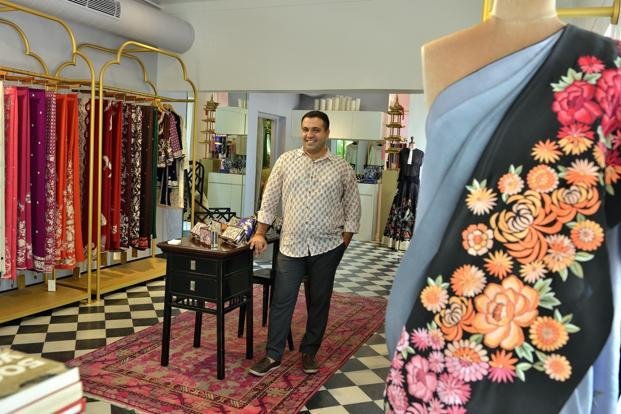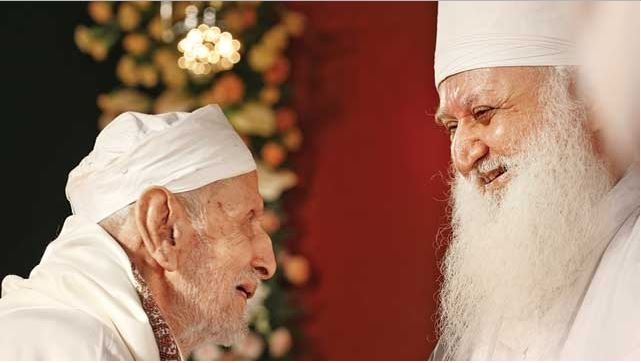How a new prayer hall is changing funeral patterns in Mumbai’s Parsi community
 After more than a decade of controversy, a growing number of Mumbai’s Parsi Zoroastrians are now choosing to cremate their deceased loved ones instead of consigning them to the traditional Towers of Silence to be consumed by vultures.
After more than a decade of controversy, a growing number of Mumbai’s Parsi Zoroastrians are now choosing to cremate their deceased loved ones instead of consigning them to the traditional Towers of Silence to be consumed by vultures.
Before 2015, barely 6% of the city’s 45,000 Parsis opted for cremation, even though this method seemed to offer greater dignity in death. But in the past eight months alone, that number has more than doubled: according to Jehangir Patel, editor of community magazine Parsiana, at least 15% of Mumbai’s Parsis are now choosing cremation.
The sudden spurt in the popularity of electric cremation can be attributed to one key factor: the opening of a new Zoroastrian prayer hall attached to a civic crematorium in South Mumbai’s Worli area. The prayer hall was inaugurated in August 2015, had its first funeral in September 2015, and since then has already been the venue of funerals for more than 50 Parsis in six months.
The spacious 3,700-sq-ft prayer hall is the product of a vociferous debate between the liberal and conservative factions of the community about how to dispose of the dead with dignity.
The mess at the Towers
When Parsis migrated from Iran to western India more than 1,000 years ago, they built several Towers of Silence, or dakhmas, in keeping with the ancient Zoroastrian custom of disposing the dead by exposing them to scavenger birds like vultures. Bodies are placed in ridges at the top of the stone towers and allowed to be eaten by vultures as a means of giving back to nature.
Mumbai has four Towers of Silence, built in a forested 54-acre plot called Doongerwadi in the middle of the posh Malabar Hill neighbourhood. While Doongerwadi served the city’s Parsis well for almost 300 years, things began to change as Mumbai’s vulture population began to decline in the mid-1990s. Vultures were dying not just because of urbanisation but also because the drug Diclofenac, introduced in the 1980s to treat livestock for inflammations and fevers, proved to be toxic for the birds feeding on cattle carcasses. By 2006, vultures were nearly extinct.
This posed an unexpected dilemma for the small Parsi community, as uneaten bodies atop the Towers of Silence were left to rot for months. Progressive Parsis grew increasingly outraged about the indignities within Doongerwadi, and the Bombay Parsi Punchayet, a trust managing the affairs and properties of the community, tried to respond to the crisis through innovation.
Attempts were made to breed vultures in Doongerwadi, but the plan did not succeed. The Punchayet installed large solar reflectors around the Towers to hasten the decomposition of the bodies under the sun, but according to Tamboly and other community members, this too has been ineffective.
The need for a new prayer hall
Over the past decade, the conditions at Doongerwadi pushed several progressive Parsis to turn to cremation as a more respectful method of disposing the dead. Around the world, Zoroastrians almost everywhere had already adopted either cremation or burial. But it was proving to be a difficult choice in Mumbai, where Parsis had to use civic burial grounds or crematoriums instead of those specific to their community.
Traditional Parsi funeral prayers last for four days after a death, with family members practically living at specially designed prayer halls within Doongerwadi to pray for the soul of the deceased. But the Bombay Parsi Punchayet does not allow those who opt for cremation or burial to use Doongerwadi’s prayer halls for the four-day funeral rites.
“If a family chose cremation, they were forced to hold the funeral ceremonies either at home or in any other hired hall, and if they couldn’t afford a hall big enough to accommodate all attendees, they had to just forgo the ceremonies,” said editor Jehangir Patel. This is why, despite the unpleasant conditions at Doongerwadi, only a small section of the community was choosing cremation.
This is also what pushed Dinshaw Tamboly – a former trustee of the Punchayet – to team up with other like-minded Parsis and convince Mumbai’s municipal corporation to give the community a plot for a new prayer hall within the Worli crematorium. The plot was granted in 2014 and it took more than a year – and Rs 1.7 crore of community donations – for the Worli prayer hall to finally open.
Cremations on the rise
The hall, with a seating capacity of 200 people, is technically available to people from all communities, but Parsi Zoroastrians get first priority. Initially, funeral services at the hall were officiated at by just two reformist priests: Framroze Mirza and Khushroo Madon. Both Mirza and Madon had been barred from Doongerwadi and other Punchayet-run fire temples since 2009, because they officiated at ceremonies for Parsis marrying outside the community and those choosing cremation or burial, practices frowned on by the orthodox.
“But in the nine months since the Worli prayer hall opened, 11 more reformist priests have begun conducting funeral rites at the hall,” said Tamboly, who expects the number of Parsis opting for cremations to now grow at a much faster rate.
Even though the majority of the community is still going to Doongerwadi for disposing their dead, priest Khushroo Madon believes this will change soon. “Some still think that cremation is a defilement of fire, which is sacred to Zoroastrians,” said Madon. “But this hall is fulfilling a definite need in the community and the majority will soon shift to cremation.”
Published on Scroll.in





